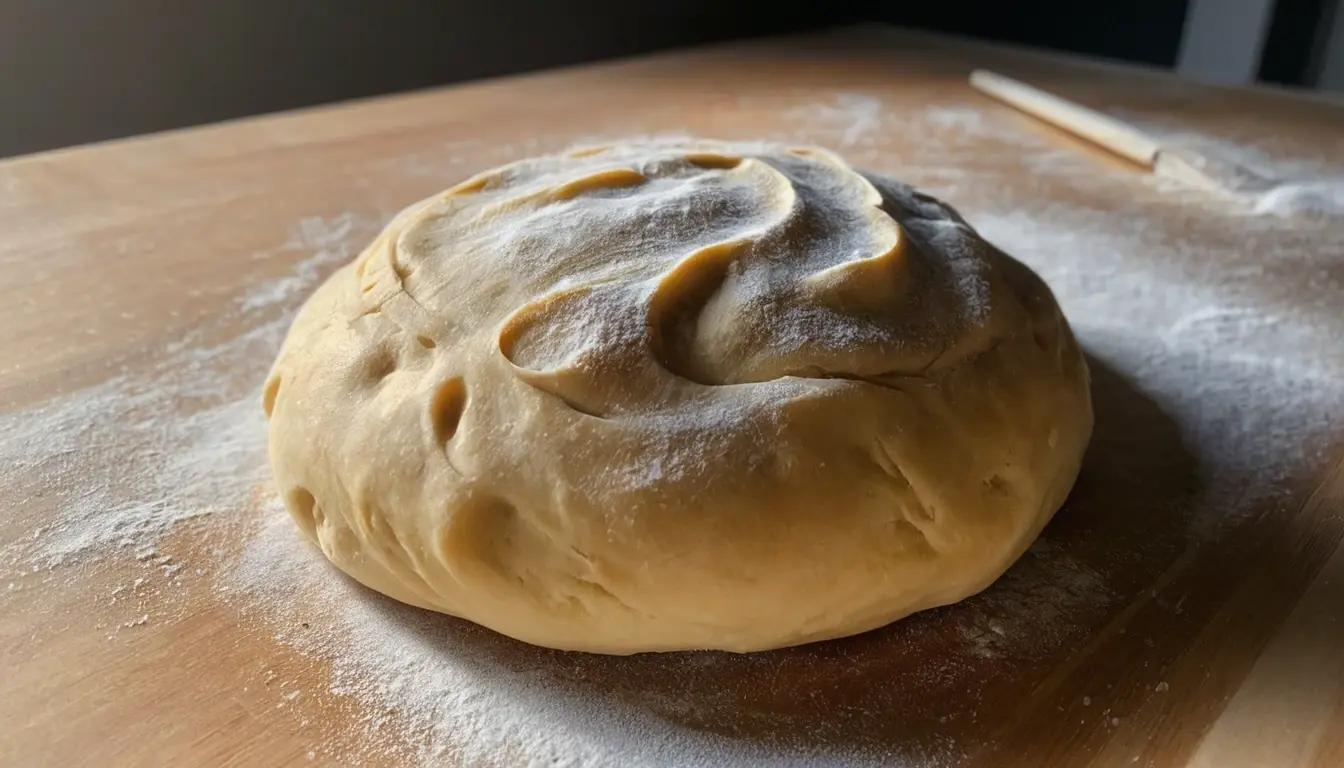If there’s one dish that embodies the heart and soul of Italian comfort food, it’s Pizza Rustica. Known for its rich filling of savory meats, creamy cheeses, and flaky, golden crust, this traditional Italian pie is a showstopper at family gatherings, especially around Easter. Also called Italian Easter Pie, Pizza Rustica is not your typical pizza. It’s a rustic masterpiece—a savory pie that’s part quiche, part meat pie, and 100% irresistible.
Originating from Southern Italy, Pizza Rustica has a long history of being served during Easter as a symbol of abundance after the Lent fast. Families gather to share this hearty dish, packed with layers of cured meats like prosciutto and salami, along with ricotta, mozzarella, and pecorino cheeses. Every bite offers a symphony of flavors—a perfect balance of salty, creamy, and buttery goodness wrapped in a crisp crust.
But Pizza Rustica is more than just a festive dish. It’s a celebration of family traditions and the joy of home cooking. Whether you’re enjoying it warm out of the oven or cold as a leftover snack, this savory pie never fails to impress.
In this guide, we’ll take you step by step through the process of making the perfect Pizza Rustica. From crafting the dough to layering the filling and baking it to golden perfection, you’ll discover all the tips and tricks to recreate this beloved Italian recipe in your own kitchen.
Let’s get started on this culinary journey into the delicious world of Pizza Rustica!
Why You Will Love This Recipe
Pizza Rustica isn’t just a recipe—it’s a story waiting to be told with every bite. For Miranda, , Pizza Rustica holds a special place in her heart. It’s more than just an Italian savory pie; it’s a connection to her childhood and the cherished memories of cooking with her grandmother in a cozy kitchen filled with the scent of freshly baked pastry and bubbling cheese.
As a little girl, Miranda would eagerly watch her grandmother prepare Pizza Rustica during the Easter season. She vividly remembers how her grandmother’s hands moved with precision and love, gently kneading the dough and layering the filling with care. “Cooking Pizza Rustica felt like creating a work of art,” Miranda recalls, “and every year, it became the highlight of our Easter celebration.”
Over time, the recipe became a tradition—a dish that Miranda carried with her into her own kitchen. What makes Pizza Rustica so irresistible isn’t just the combination of meats, cheeses, and a flaky crust; it’s the joy of creating something from scratch, knowing it will bring people together around the table.
Whether you’re looking for a new holiday tradition or just a satisfying meal for a weekend gathering, you’ll fall in love with this recipe. Its rich flavors and comforting layers make it an instant favorite. Miranda’s advice? Don’t rush it—enjoy the process, savor each step, and let Pizza Rustica remind you of the power of good food and warm memories.
Ready to make it yourself? Let’s dive into the ingredients!
Ingredients for the Recipe
Making Pizza Rustica is all about using fresh, high-quality ingredients to build layers of flavor and texture. This savory pie consists of two main components: the dough and the filling. The combination of buttery, flaky crust and a rich filling made with meats and cheeses is what makes Pizza Rustica an unforgettable experience. Let’s break down what you’ll need.
For the Dough
The dough is crucial for achieving the perfect balance between structure and flavor. Unlike typical pizza dough, the crust for Pizza Rustica is more like a pastry crust—flaky, tender, and slightly rich from the addition of eggs. Here’s what you’ll need:
- 3 ½ cups all-purpose flour
- 1 teaspoon salt
- 1 cup cold unsalted butter, diced
- 4 large eggs
- 1-2 tablespoons cold water (if needed, to bring the dough together)
This dough is easy to prepare, and when baked, it becomes the perfect golden shell for the savory filling inside.
For the Filling
The filling is where Pizza Rustica truly shines. Traditionally packed with cured meats and cheeses, it’s a savory lover’s dream:
- 1 lb ricotta cheese (drained)
- ½ lb mozzarella cheese, diced
- ½ lb pecorino cheese, grated
- ½ lb salami, chopped
- ½ lb prosciutto or cooked ham, chopped
- 3 large eggs (plus one for brushing the crust)
- Freshly ground black pepper, to taste
Now that we’ve gathered all the ingredients, it’s time to move on to the tools and equipment you’ll need to bring your Pizza Rustica to life!

Equipment Needed
Before diving into the preparation of Pizza Rustica, it’s essential to have the right tools on hand. Having the proper equipment will ensure your savory pie turns out perfectly golden and flaky, with a rich filling that’s cooked to perfection. Don’t worry—you won’t need any fancy gadgets, just a few basic kitchen essentials. Here’s what you’ll need:
1. Mixing Bowls
A set of large mixing bowls will help you prepare the dough and filling separately. Choose bowls with enough space to mix comfortably without making a mess.
2. Rolling Pin
A sturdy rolling pin is necessary for rolling out the dough into a thin, even layer. This is crucial for achieving that perfectly crisp yet tender crust that makes Pizza Rustica so delightful.
3. Pastry Brush
A pastry brush will come in handy for brushing the top of the pie with an egg wash. This step gives the crust that gorgeous golden-brown color once it’s baked.
4. 9-Inch Springform Pan or Deep Pie Dish
Using a springform pan is ideal for Pizza Rustica because it allows for easy removal and helps maintain the pie’s beautiful shape. If you don’t have one, a deep pie dish works just as well.
5. Sharp Knife or Bench Scraper
You’ll need a sharp knife or bench scraper to trim the dough and cut neat slices of your finished pie.
6. Wire Rack
A wire rack is essential for cooling your pie once it’s out of the oven. Cooling it on a rack helps prevent the bottom crust from becoming soggy.
Up next, we’ll share some pro tips to help you achieve the best results with your Pizza Rustica!
Tips for the Best Results
When it comes to making Pizza Rustica, a few expert tips can take your savory pie from good to unforgettable. It’s all about the little details—how you prepare the dough, layer the filling, and bake the pie. These tips will help ensure your Pizza Rustica is a crowd-pleaser every time.
1. Chill Your Dough
One of the most important steps in creating a perfect crust is keeping your dough cold. After mixing the dough, wrap it in plastic wrap and refrigerate it for at least 30 minutes. This step helps the butter stay cold, which results in a flakier crust once baked.
2. Drain the Ricotta
Excess moisture can lead to a soggy filling. To avoid this, make sure to drain the ricotta cheese before mixing it with the other ingredients. Simply place the ricotta in a fine-mesh strainer or cheesecloth and let it sit for 15–20 minutes.
3. Don’t Overfill
While it might be tempting to stuff your Pizza Rustica with extra meat and cheese, avoid overfilling it. Too much filling can cause the pie to burst open during baking or leave the crust undercooked.
4. Brush with Egg Wash
For that beautiful golden-brown finish, don’t forget to brush the top crust with an egg wash (a beaten egg mixed with a tablespoon of water or milk). This will give your pie a shiny, bakery-quality appearance.
5. Let It Cool Before Slicing
Patience is key! Allow your Pizza Rustica to cool for at least 20–30 minutes before slicing. This gives the filling time to set, making it easier to cut clean, beautiful slices.
By following these tips, you’ll achieve a perfectly baked Pizza Rustica with a flaky crust and flavorful filling that will leave everyone asking for seconds. Next, let’s talk about how to serve this delicious pie!
Serving Suggestions
Once your Pizza Rustica is baked to golden perfection and has had time to cool, it’s time to enjoy the fruits of your labor. This savory Italian pie is incredibly versatile and can be served warm, at room temperature, or even cold. Whether you’re hosting a brunch, bringing it to a family gathering, or simply indulging in a cozy meal at home, Pizza Rustica is always a crowd-pleaser.
1. Serve Warm for Ultimate Comfort
Warm Pizza Rustica is the ultimate comfort food. The flaky crust, gooey cheese, and flavorful meats meld together beautifully when served fresh out of the oven. Pair it with a light green salad and a glass of crisp white wine for a well-balanced meal.
2. Perfect for Brunch or Picnics
Because Pizza Rustica tastes just as good at room temperature, it’s an ideal dish for brunches and picnics. Slice it into wedges and serve it alongside fresh fruit, roasted vegetables, or a charcuterie board for a truly Italian-inspired spread.
3. Cold Slices for a Quick Snack
Don’t overlook how delicious Pizza Rustica can be when served cold. It makes a fantastic grab-and-go snack or a satisfying lunch. Simply wrap a slice in parchment paper, and it’s ready for a lunchbox or picnic basket.
4. Pairing Ideas
To bring out the best flavors, pair Pizza Rustica with a glass of Prosecco, a light Pinot Grigio, or even a refreshing Italian beer. For side dishes, roasted asparagus, sautéed greens, or a caprese salad are excellent choices.
Whether served warm or cold, Pizza Rustica is a dish that fits any occasion. Up next, we’ll recommend some delicious recipes from milestonerecipes.com that pair perfectly with this savory pie!

Recommended Recipes
If you’re loving the idea of making Pizza Rustica, you’ll definitely want to check out some other incredible recipes from our site. These recipes offer a perfect balance of flavor and creativity, making them excellent companions for your Italian-inspired feast. Here are a few must-try options:
1. Sourdough Pie Crust Recipe: Perfect Tips & Techniques
If you’re a fan of sourdough, this recipe will take your pie-making skills to the next level. The tangy flavor of sourdough adds depth to any savory pie, including Pizza Rustica. This guide is packed with helpful tips and techniques to ensure your crust turns out perfectly every time.
2. Garlic Parmesan Chicken Pasta Recipe
Looking for a main course or side dish to complement your Pizza Rustica? This creamy garlic parmesan chicken pasta is a hit at any dinner table. It’s loaded with flavor and pairs beautifully with a slice of savory pie.
3. Zucchini Parmesan Chips
For a crispy, cheesy snack or appetizer, try these zucchini parmesan chips. They’re light, crunchy, and a great way to start your meal. Serve them as a snack while your Pizza Rustica is baking!
These recipes are just the beginning. Our site is full of inspiration for your next culinary adventure, so don’t hesitate to explore further. Now, let’s move on to some important notes to help you customize and perfect your Pizza Rustica!
Notes
When preparing Pizza Rustica, a few extra considerations can help ensure that your savory pie turns out exactly as you imagined—or even better! These notes will provide you with insights for customizing the recipe, making substitutions, and preserving your creation for later enjoyment.
1. Customize the Filling
One of the best things about Pizza Rustica is its versatility. While the classic version includes meats like salami, prosciutto, and ham along with cheeses such as ricotta, mozzarella, and pecorino, you can easily switch things up. Want a vegetarian version? Swap the meats for sautéed spinach, roasted red peppers, and artichokes. You can also experiment with different cheeses, such as fontina or provolone, to create new flavor combinations.
2. Substitution Tips
- Dough: If you’re short on time, you can use store-bought pie dough, but homemade dough will always give the best results.
- Ricotta Cheese: Can’t find ricotta? Use cottage cheese as a substitute—just make sure to blend it for a smoother texture.
- Meats: If you prefer a milder flavor, replace prosciutto with cooked ham or turkey.
3. Freezing Instructions
Want to freeze your Pizza Rustica? No problem! Bake it fully, then let it cool completely before wrapping it tightly in aluminum foil. To reheat, bake directly from frozen at 375°F for about 30–35 minutes.
With these notes in mind, you’ll have all the flexibility and confidence to make Pizza Rustica your own. Up next, we’ll answer some frequently asked questions to ensure your pie-making process goes off without a hitch!
FAQ
Before you get started on your Pizza Rustica, you may have some questions about the process, ingredients, and storage. Here are answers to some of the most frequently asked questions to help you along the way.
1. What is Pizza Rustica?
Pizza Rustica, also known as Italian Easter Pie, is a savory pie traditionally made during the Easter season. It’s filled with a rich mixture of cured meats, cheeses, and eggs, all encased in a flaky pastry crust. Unlike the pizza you may be familiar with, Pizza Rustica is closer to a deep-dish pie packed with hearty, indulgent ingredients.
2. Can I Use Store-Bought Dough?
Yes, you can! While homemade dough will give you the best texture and flavor, store-bought pie dough can save time. Look for a high-quality, buttery pie crust for the closest result.
3. How Far in Advance Can I Make It?
Pizza Rustica is perfect for making ahead. You can prepare it up to two days in advance and store it in the refrigerator. When ready to serve, reheat it in the oven at 350°F for 15–20 minutes.
4. Can I Freeze Pizza Rustica?
Absolutely! Pizza Rustica freezes well. Once baked and cooled, wrap it tightly in aluminum foil and freeze for up to three months. To reheat, bake it from frozen at 375°F for about 30–35 minutes.
5. What Other Meats Can I Use?
You can mix and match your favorite cured meats. Soppressata, capicola, and pancetta are great alternatives to salami and prosciutto. If you prefer a lighter version, cooked chicken or turkey can be used.
6. What’s the Best Cheese for the Filling?
Ricotta is a must for the creamy base, but feel free to add mozzarella, pecorino, provolone, or even Parmesan for added depth of flavor.
Conclusion
Making Pizza Rustica is more than just preparing a dish—it’s a chance to connect with Italian traditions, create lasting memories, and experience the joy of cooking for loved ones. This savory pie, with its flaky crust and hearty filling, is truly a celebration of flavors and family heritage.
For Miranda, Pizza Rustica is a dish that brings her back to her childhood. The first time she tasted it, she was a young girl sitting at her grandmother’s kitchen table. She recalls how the smell of the freshly baked pie filled the house, and her grandmother’s warm smile as she served the first slice. It was love at first bite—a moment that would shape Miranda’s passion for cooking.
Every time she bakes Pizza Rustica, Miranda feels that same joy and connection to her roots. It’s a dish that reminds her of home, family, and the simple pleasures of life. She encourages you to make this recipe your own, enjoy the process, and savor every bite.
Whether you’re preparing it for a holiday gathering, a weekend brunch, or a casual dinner, Pizza Rustica is sure to impress. Share it with friends and family, just as Miranda does, and create your own special memories around the table.
Buon appetito!
Print
Pizza Rustica
- Total Time: 1 hr 30 mins
Description
A traditional Italian pie packed with meats and cheeses in a golden, flaky crust. Perfect for family gatherings or festive celebrations
Ingredients
For the Dough:
- 3 ½ cups all-purpose flour
- 1 tsp salt
- 1 cup butter (cold)
- 4 large eggs
For the Filling:
- 1 lb ricotta cheese
- ½ lb mozzarella, diced
- ½ lb salami, chopped
- ½ lb cooked ham, chopped
- 3 large eggs
- Salt and pepper to taste
Instructions
- Prepare the Dough: Mix the flour, salt, and cold butter. Add eggs until the dough comes together.
- Prepare the Filling: Combine ricotta, mozzarella, meats, and eggs in a large bowl. Season to taste.
- Assemble the Pie: Roll out dough, fill with the meat mixture, and seal with a top crust.
- Bake: Preheat oven to 375°F. Bake for 50-60 minutes until golden brown.
- Cool and Serve: Allow it to cool for 20 minutes before slicing.
Notes
Substitute meats and cheeses to customize your filling.
- Prep Time: 30 mins
- Cook Time: 60 mins
